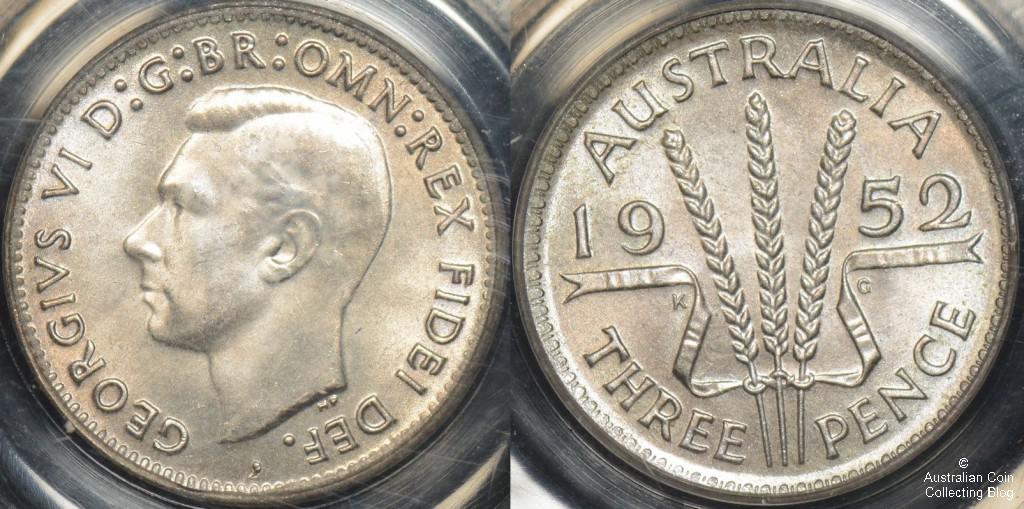|
Obverse |
King George VI – Thomas H Paget Legend (1937-48): GEORGIVS VI : D : G : BR : OMN : REX F : D : IND : IMP |
|
Reverse |
Wheat Stalk and Ribbon Device – George Kruger Gray Legend: Australia Threepence |
|
Composition |
1937-44: 92.5% Silver, 7.5% Copper |
|
Mass |
1.41 g |
|
Size |
16 mm (5/8″) |
|
Actual Silver Weight (ASW) |
1937-1944: 0.04193 tr.oz. |
The George VI threepence series finally saw the end of the obsolete Australian Coat of Arms from the reverse. It was replaced with a three wheat stalks and ribbon device symbolising Australia’s dependence on its’ farming industry. It was issued from 1937 (in pattern form only) until 1952. For a period during the Second World War minting took place at the Denver and San Francisco mints in the USA. This was due primarily to the lack of silver and a high workload in the Australian mints. In 1947 minting resumed in Australia. 1951 saw the Australian mints again unable to meet demand and part of the production was struck at the Royal Mint in London.
The George VI threepence was struck with two different obverses. In 1948 the legend on the obverse had the IND:IMP removed (India became an independent nation in 1948) and the REX:F:D expanded to REX FIDEI DEF. Four different reverses decorated the series. The regular Australian minted coins showed the three wheat stalk device with 83 pairs of alternative thick and thin denticles. The US minted coins showed the same device along with a mint mark was shown just above the E in PENCE with S representing the San Francisco mint and D the Denver mint. The final variety was the London struck 1951 coin. This showed the wheat stalk device with 85 pairs of thick and thin denticles. The mint mark was a P just below the left ribbon, and an L below the right ribbon.
The key dates in the George VI series of 3d coins are the specimen only 1937 issue and the 1942 Melbourne minted coin. The 1947 coin can be a little difficult to find also. The wartime minted coins can be hard to find in a well struck up form. Clearly priorities were different in this time and weak strikes, broken dies, and oil/grime filled dies are quite common. Collectors looking for a well struck up coin should look no further than the 1951PL issue which is quite distinctive in it’s strike characteristics.


